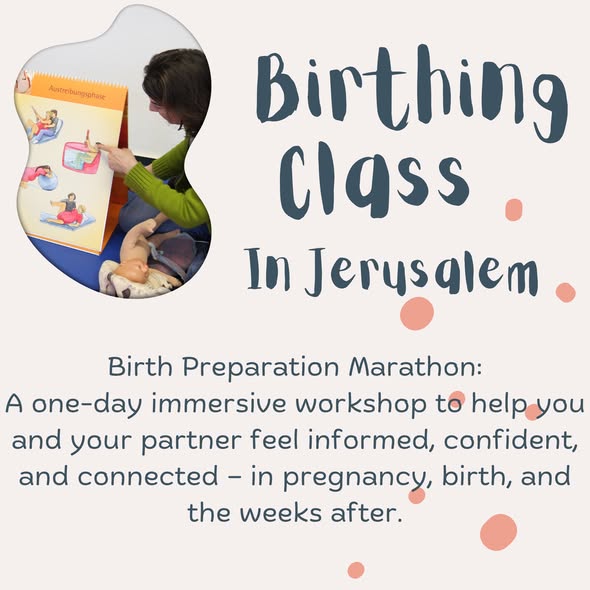I encourage everyone to explore all the available options for childbirth and consider what suits their individual situation best. Hospital birth is the most common choice in Israel. Picking the nearest hospital might not always align with your needs and preferences, so it is good to check out all the options where you live.
To find the best-suited hospital for your needs, start by outlining your essential criteria in a list (or join my birth prep course for a ready-made one). Consider key factors that are important to you. This might be:
- Support for Interventions-Free Birth: Rooms suitable for natural birth, equipped with amenities such as balls, showers, pools, wireless monitors, etc.
- Medical Pain Relief Options: laughing gas or epidural options.
- Policies on the Number of Accompanying Support People (if you plan to bring more than one person)
- Medical Management Choices: IV, frequency of cervical checks, possibilities for non-continuous monitoring, etc.
- Midwife-to-Birthing Women Ratio and Other Influential Aspects: Consider the ratio of midwives to women in labor and additional factors that significantly impact the childbirth experience.
“Yoldot” offers an app for comparing hospitals (not everything is up-to-date there).
Most importantly, visit the hospitals, ask your questions, and see which one feels right for you. Most hospitals offer weekly labour ward tours.
As this article was published as a series on different options, I’m also sharing the advantages and disadvantages of hospital births below:
Advantages:
- It’s free (if you are insured with the Kupot Cholim system).
- For a first birth, it’s probably the safer option for the baby. (according to birth place study UK, not confirmed by studies from Canada)
- Immediate access to obstetricians and anesthetists when needed
- Availability of neonatologists (specialists in newborn care) and special care baby units.
- Access to medical pain relief like epidurals, opioids, and laughing gas.
Disadvantages:
- Lack of one-on-one care; typically, one midwife handles 2-4 laboring women simultaneously.
- Unfamiliarity with the midwives and doctors, and shifts may change.
- Increased likelihood of interventions like episiotomies, vacuum birth, or unplanned c-sections compared to home and birth center births.
- Limited comfort options such as birthing pools, often with strict criteria.
- Some hospital midwives may not be trained to support movement during labor or birthing in upright positions.
- Fathers might not always be allowed to stay with mom and baby overnight.
- Limited privacy; rooms may have just a curtain, with frequent visits from doctors and midwives.

